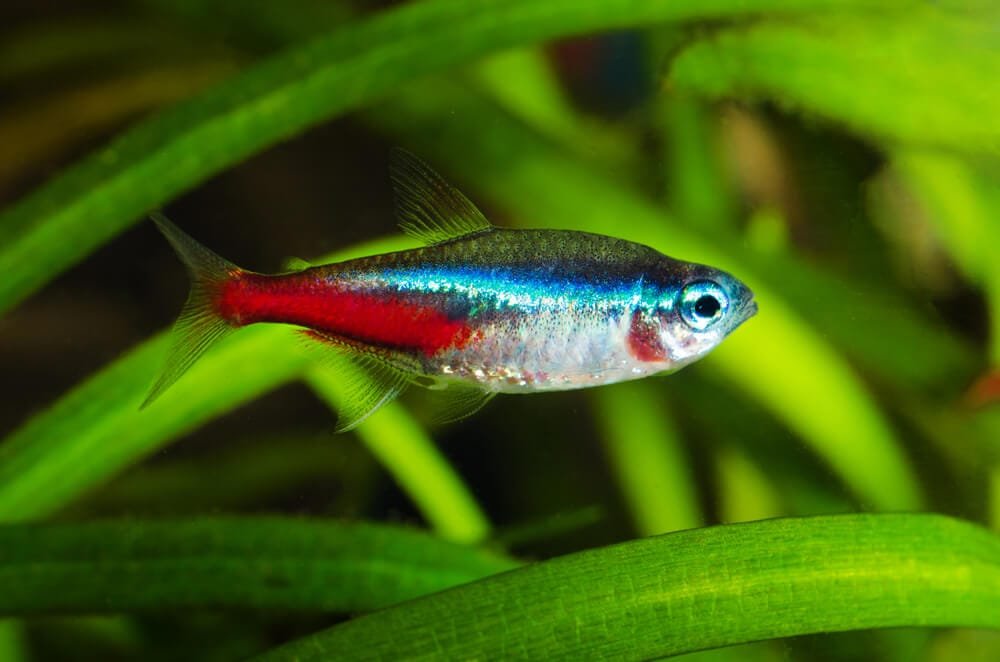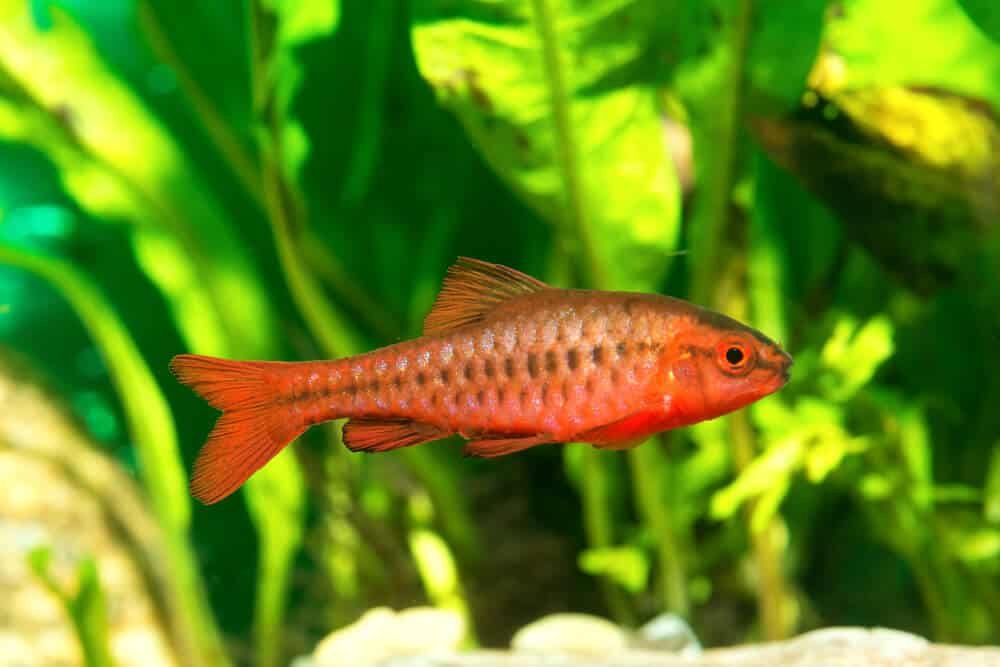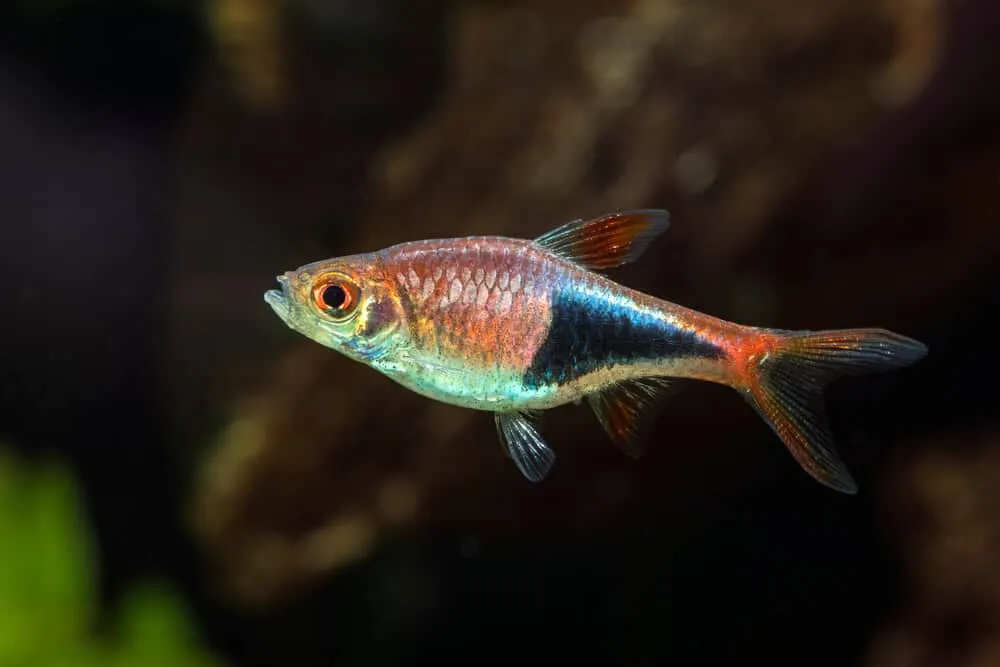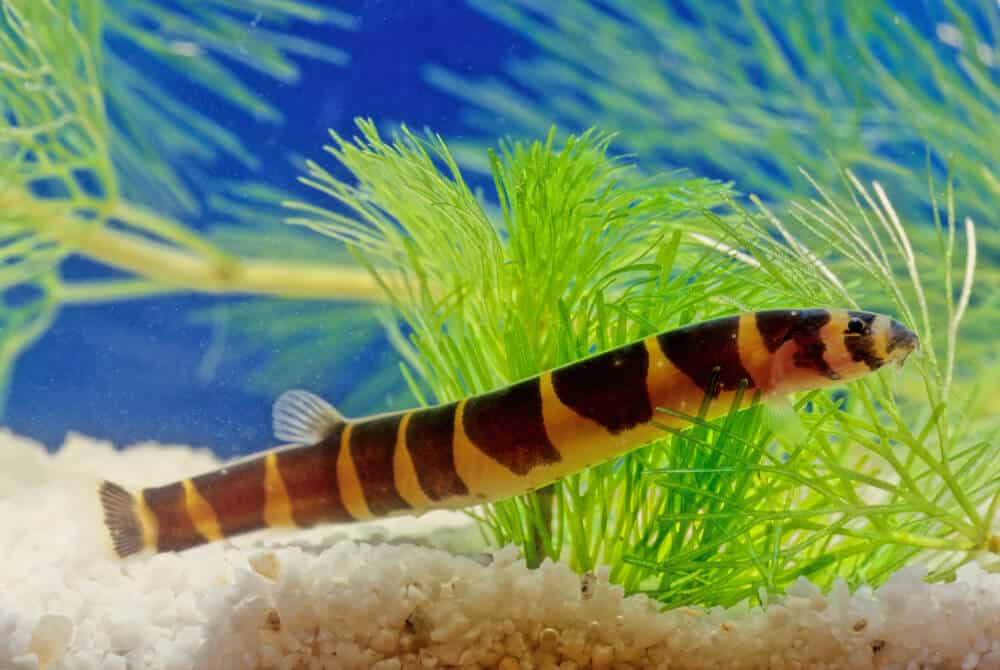Jack Dempsey Cichlid Care Guide: Lifespan, Feeding, Diet And Size
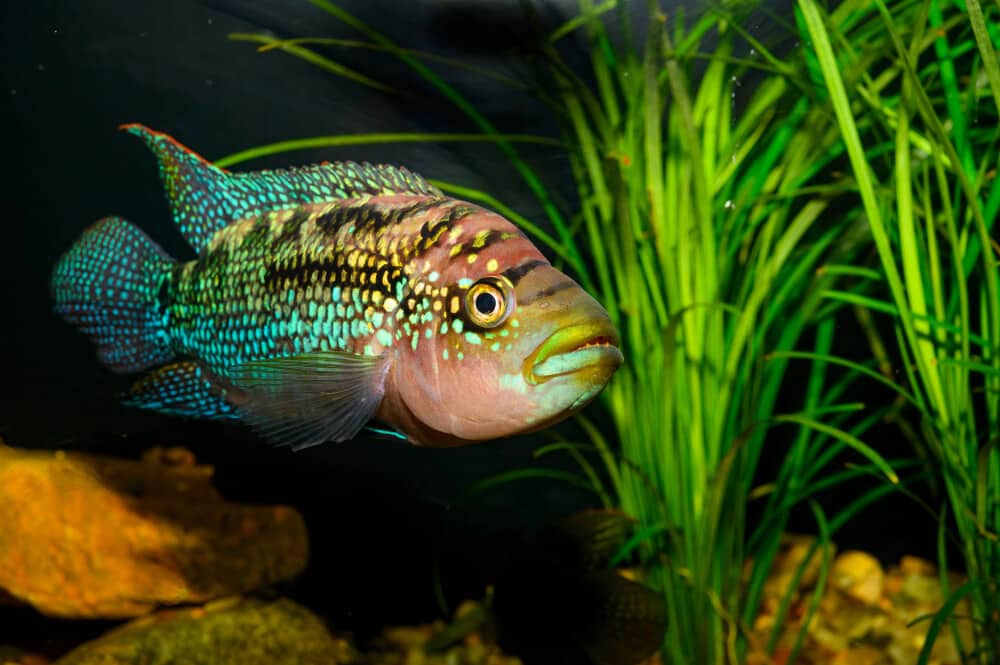
Cichlids are widely known for their beautiful coloration. But there is one cichlid that differs from the rest. If you’ve been planning to get a Jack Dempsey cichlid, you’ve probably wondered what you need and how to take care of them.
First, you’ll need to understand what it is and how to feed it. Next, we’ll be moving on to setting up the right home for them.
In this guide, we’ll cover all you need to know about this beautiful cichlid.
What Is A Jack Dempsey Cichlid?
The Jack Dempsey cichlid, or scientifically named ‘Rocio octofasciata,’ is a fish from the family of Cichlidae. The origins of cichlids are from either America or Africa. This fish can be found across the slow-moving streams of North America and Central America, particularly in Mexico and Honduras.
In the other half of the world, the fish can also be found in some warm waters of Thailand and Australia. It’s called ‘Mexican Blue Frontosa’ on those parts. It is also popular in pet stores, wherein it costs $5 to $10 each.
The usual lifespan is 8 to 10 years. However, if kept in a nurturing environment, they can reach 15 years.
Size
Usually, they have large oval bodies and long fins. You can determine the gender of these fishes by looking at their fins. The male ones have longer fins, especially on the dorsal and anal parts. Meanwhile, the female ones have shorter and less pronounced fins.
Inside an aquarium, these fishes typically grow around 8 to 10 inches. The male is expected to grow 10 inches long while the female is expected to be 8 inches in length.
Aside from length, they also have thick bodies. Due to this, they can intake more food and consequently excrete a larger amount of feces.
Color
As mentioned, Jack Dempsey cichlids are very popular because of their colorations. Some have vibrant colors, while others exude elegance in the darkness. Some also have patterns in their scales. The color can vary from one age group to another.
Do Jack Dempseys Change Color?
Their color can change as they age or experiences extreme conditions.
Usually, the younger ones can have a pale gray color with green flecks, while the older ones have a dark purple and gray color pattern with blue-green flecks. Under special situations like incurring stress or mating, they can temporarily change colors and get paler.
There exist a variant of the Jack Dempsey cichlids, called the ‘Electric Blue Jack Dempsey cichlid,’ which is popular because of its beautiful blue coloration and less profound features. Meaning it’s shorter and has a different temperament than the regular variants.
Due to its uniqueness, the Electric Blue variant is more expensive to acquire compared to the regular ones.
It is said that the electric blue variant is a product of cross-breeding, and there is also another myth that is the result of mutation.
Temperament
Do you know that its name is derived from a boxer named Jack Dempsey? He is an American boxer in the 1920s and is known for his aggressive fighting style and rugged features. Just like Jack Dempsey, this fish exhibits similar qualities also.
Do Jack Dempsey Cichlids Have Teeth?
Jack Dempsey cichlids do have teeth. As a carnivore, the teeth are very useful in consuming meat. Raising these fishes as pets is not recommended to beginners. However, when they are put inside well-populated aquariums, they become less aggressive than in the wild.
If the designs of your aquarium have cave-like shapes, the males become tend to be territorial.
It will try to fend off other fishes that come into its territory. One way to solve territorial disputes is to design structures inside the aquarium that have several crevices. While swimming inside, they will tend to settle at the lower and middle levels of the aquarium.
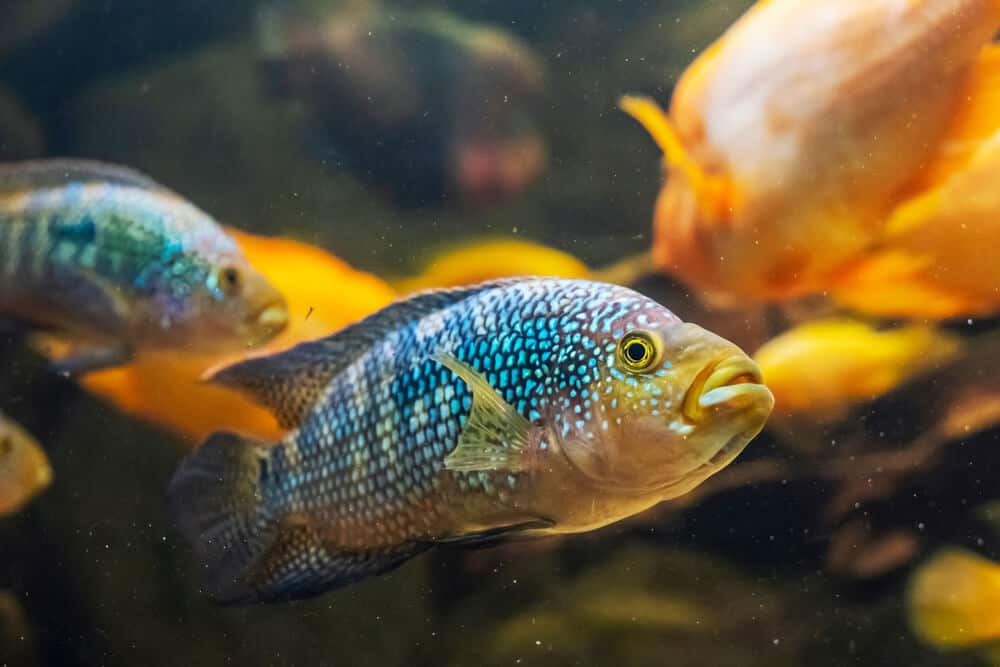
What’s Their Ideal Habitat?
In order to thrive, Jack Dempsey Cichlids need the right environment. You’ll need the following for them to survive.
Tank Setup
You might be encouraged to purchase a Jack Dempsey cichlid. But before you do, ask yourself first if you have the means to house the creature and enough room for it to grow. Since they are large fishes, they are more than enough to be regular pets.
Aside from that, they are aggressive, and therefore might need more suitable tank mates. Those are enough reasons for you to create a tank specifically designed for Jack Dempsey cichlids.
Let’s discuss further the details when building a tank aquarium for this type of cichlid.
What Tank Size Do I Need For A Jack Dempsey?
If you’re raising a single Jack Dempsey cichlid, you need a tank with a volume of at least 55 gallons or 208 liters. If you are looking to raise a pair, the required minimum volume of a tank is 100 gallons or 378 liters.
Filtration
The filtration system is probably the most important part of the aquarium, aside from the water and fish itself. This regulates the water inside the tank, making it less stagnant by circulating the dirty water, filtering it, and returning it to the tank.
Jack Dempsey cichlids have thick bodies. Therefore, they can excrete wastes in bulk. If you have a poor filtration system, it will be hard to filter dirty water and avoid health risks.
The wastes of the fish tend to settle at the bottom, and when broken down further, there can be the presence of ammonia, which is a gas toxic to the fish.
To avoid that, filtrations systems have beneficial bacteria which absorb ammonia and give off nitrite. Since nitrite is still toxic, another bacteria species that is capable of absorbing it and turning it into the lesser toxic nitrate must also be included.
The process done by the 2 sets of bacteria is called the ‘aquarium nitrogen cycle.’ Take note that taking care of Jack Dempsey cichlids is not meant for beginners.
With enough experience, you can estimate how large the filtration system can be of a tank for your fish.
Heater And Lighting
The natural habitat of Jack Dempsey cichlids is warm, slow-moving waters. Logically, there is a need to ensure the water in a tank aquarium is warm enough for the fish. To accomplish that, you will need a suitable aquarium heater.
The key here is to look for a slightly oversized heater. An undersized heater will tend to do more work than intended, and this can lead to shortening its lifespan.
With an oversized heater, you can maintain the water temperature without running constantly.
Aside from the heater, lights can provide ample heat also. Fluorescent lights are very common lighting. Nowadays, the LED lighting is much preferable because it requires less maintenance and can be an energy-saver in the long run.
Plants
An aquarium is not complete without the presence of aquatic plants. The plants do not only serve as natural-like decorations, but it also serves as shade.
Jack Dempsey cichlids love to dig unto the substrate. They are just very diligent in making holes. However, plants will become loose and soon wander around the water because they are being uprooted.
Compared to other fishes, they don’t eat the plants since they are carnivores. So, if you are planning to add plants to your fish tank, make sure to select the floating types such as hornwort, frogbit, pennywort, water sprite, or water lettuce.
Vallisneria, or eelgrass, is also recommendable to have a meadow-like environment that the fishes can swim through. Anubias and Java moss are also good choices since these plants can live in tough situations.
Substrate
As mentioned, Jack Dempsey cichlids love to dig the substrate. Therefore, it is not advisable to choose plant soil. It will only create a mess once they start to dig around. The recommended substrate is either gravel or sand.
The minimum thickness for adding a sand or gravel substrate is 2 inches from the aquarium floor. Sand and gravel are excellent substrates because it will be easy for them to dig around, and thus, there will be less mess.
Also, sand can be leveled as the fishes move around the surface, but gravel still looks pleasing even when unlevelled.
One of their strange qualities is that they adapt to the colors of their surroundings. The dark substrate can encourage them to turn their colorations into dark colors, and this even makes the illumination of their scales stand out more.
However, be cautious in choosing sand as a substrate. As much as possible, go for inert substrate rather than ‘cichlid sand.’ The cichlid sand is comprised of aragonite, which is the crystallized version of calcium carbonate.
The problem with this sand is that as time goes by, the aquarium water will be contaminated by the sand’s calcium carbonite.
This means that the pH levels of the water will increase and also the hardness. In laymen’s terms, it will become soapy. Although African cichlids like that scenario, Jack Dempsey cichlids prefer soft water.
Decor
The Jack Dempsey cichlids are already beautiful, so the term ‘decor’ is not referring to how humans view the aquarium. The term here applies to the scenario for the fishes wherein they feel that the aquarium is a natural environment.
Aside from the substrate, you can add make-shift piles as decors where they can settle inside.
Remember that these fishes, especially the male ones, are territorial. So in a way, that make-shift pile can be their turf. A pile can be made from tree branches, driftwood logs, and even large rocks.
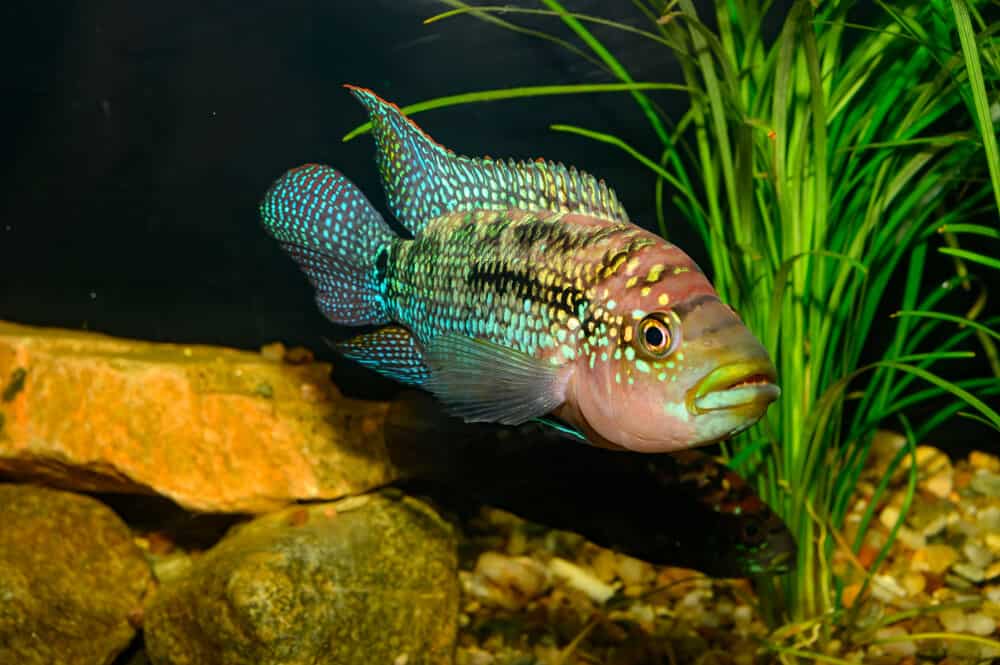
Water Parameters
Jack Dempsey cichlids like it when they’re in soft water. Therefore, the pH levels and hardness must be at a particular parameter. If you want a healthy environment for them, make sure the water is slightly acidic.
It is okay, though, since these fishes can adapt to different water conditions if that is not possible enough. However, it wouldn’t hurt to avoid things that can increase the alkalinity of the water.
Here are the ideal water parameters you can base from.
- Temperature: 23° to 29° Celsius; 74°-85° Fahrenheit
- pH level: 6.0-7.0
- Ammonia/Nitrite: 0
- Nitrate: Less than 40 ppm
- KH: 4-6 dGH (72-107 ppm)
- GH: 3-8 dGH (50-133 ppm)
Tank Mates
Now that you know what this type of fish needs, you also need to make sure that it won’t have any conflict with the other fish in your tank.
How Aggressive Are Jack Dempsey Cichlids?
Jack Dempsey cichlids are aggressive and territorial. They can fight any fish that is lesser than their size.
Imagine a large aquarium tank with just one or two cichlids in it. That might seem boring, but for them, they are fine with it. Aside from their sizes, their aggressive nature can be stressful to other fishes.
As Jack Dempsey cichlids age, they become more territorial. If a male can establish a territory in a certain crevice of a rock or pile of driftwood, it will guard its area and drive away other fishes. If it becomes bigger, it will try to harass other fishes even to the point of killing them.
Does A Jack Dempsey Cichlid’s Aggression Affect Others?
Yes, it does, and for the record, they can be aggressive with each other no matter what the gender is. If you happen to have two male Jack Dempsey cichlids that are sexually mature (reaches adulthood), they will battle each other until either of them is dead.
Therefore, it is unwise to put them inside a tank together. However, when it comes to mating, a couple of Jack Dempsey cichlids can live harmoniously for most of the time.
When a pair is under the mating period, they have no tolerance for other fishes. While the pair is breeding, it will attack ferociously anything that comes in their way.
What Kind Of Fish Can Go With A Jack Dempsey?
There can be fishes that pass as Jack Dempsey cichlid’s tank mates. As long as their sizes are similar to the cichlid and as long as they’re also aggressive, then there can be less conflict inside the aquarium.
If you put one and another cichlid species, the same thing can happen. When you go outdoors and observe the cichlids in their natural habitat, they submit themselves to their instincts, which are being territorial and aggressive.
So, the main concern is: are there specific fishes that can co-exist with a Jack Dempsey cichlid in an aquarium? Yes, some fishes can withstand their harassment. However, you can pull this off with a larger tank.
The recommended minimum volume is 150 gallons or 568 liters.
You can add the following fishes with similar build and aggressive temperament as tank mates:
1. Green Terrors
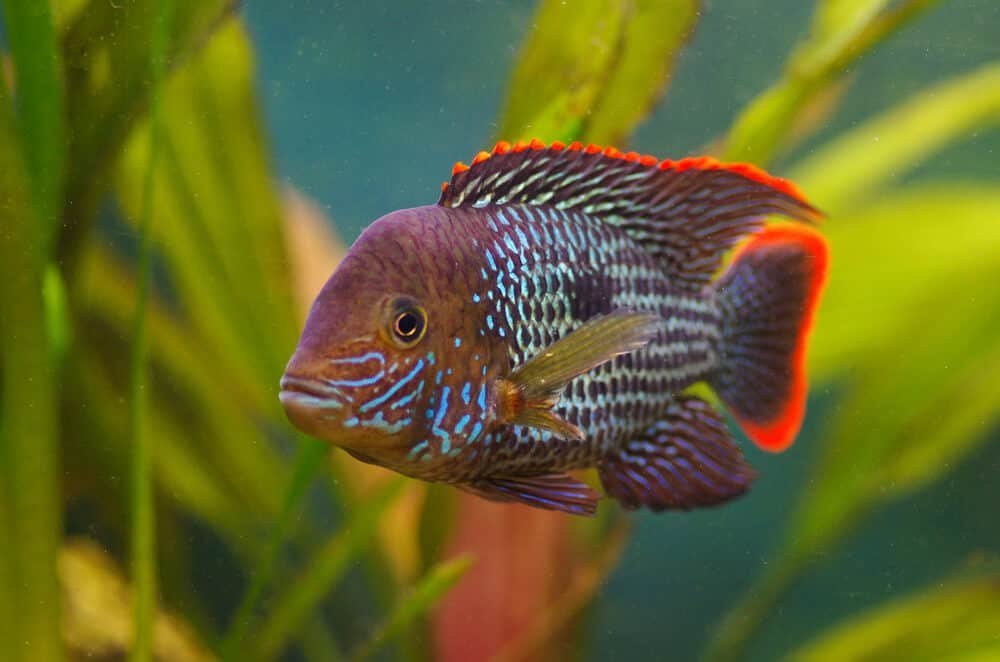
2. Severums
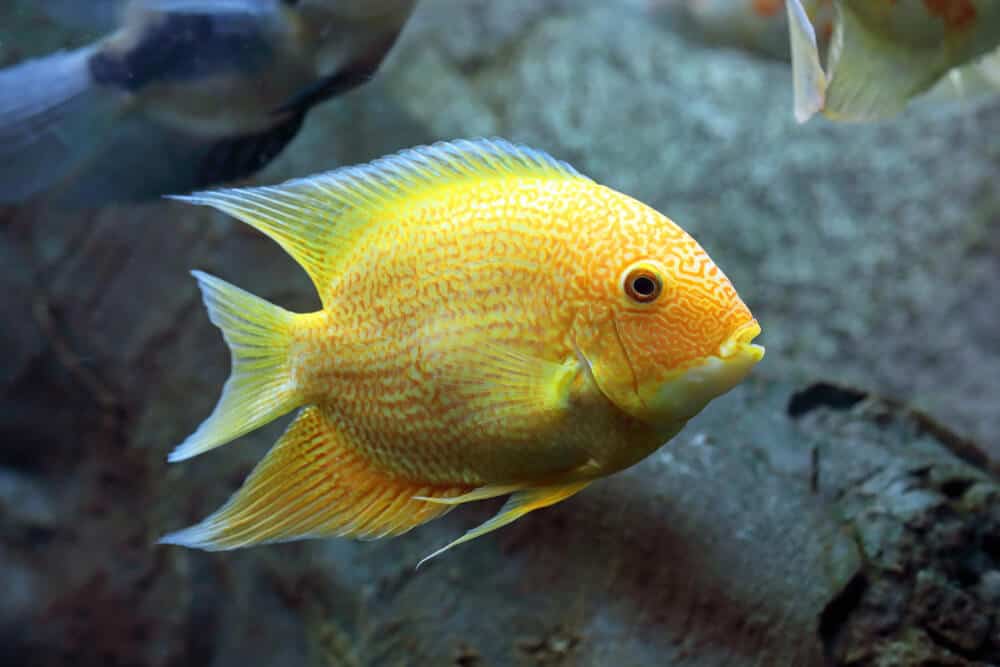
3. Oscar Fish
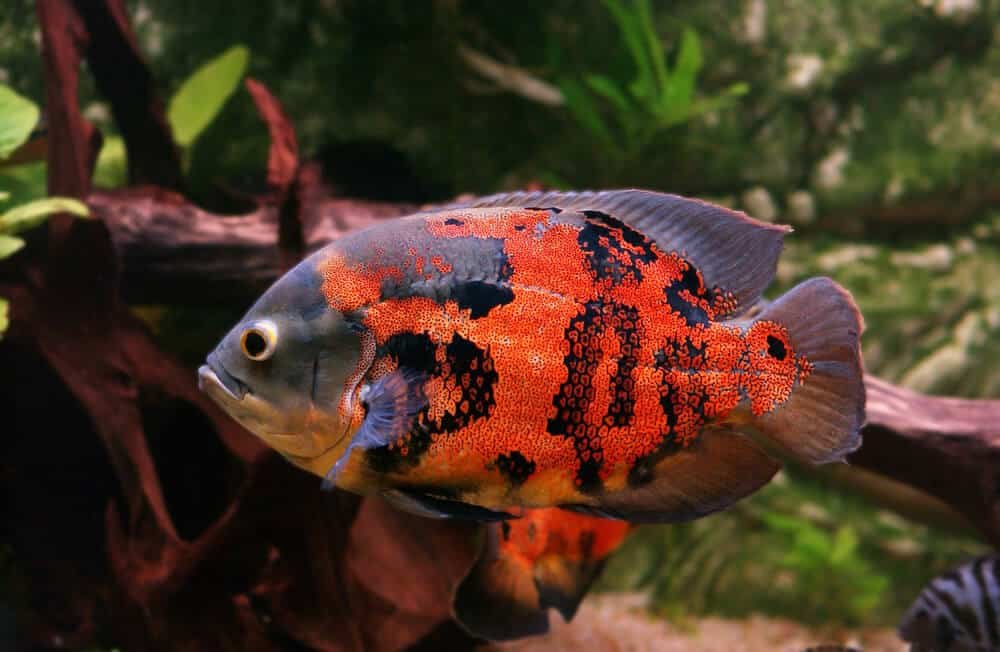
4. Angelfish
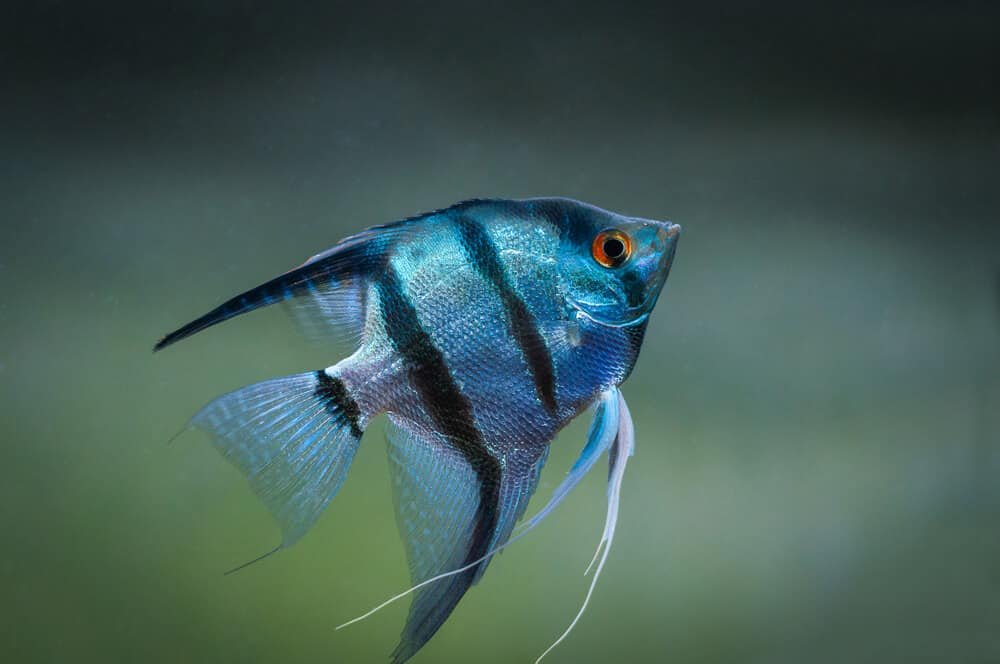
5. Bichir
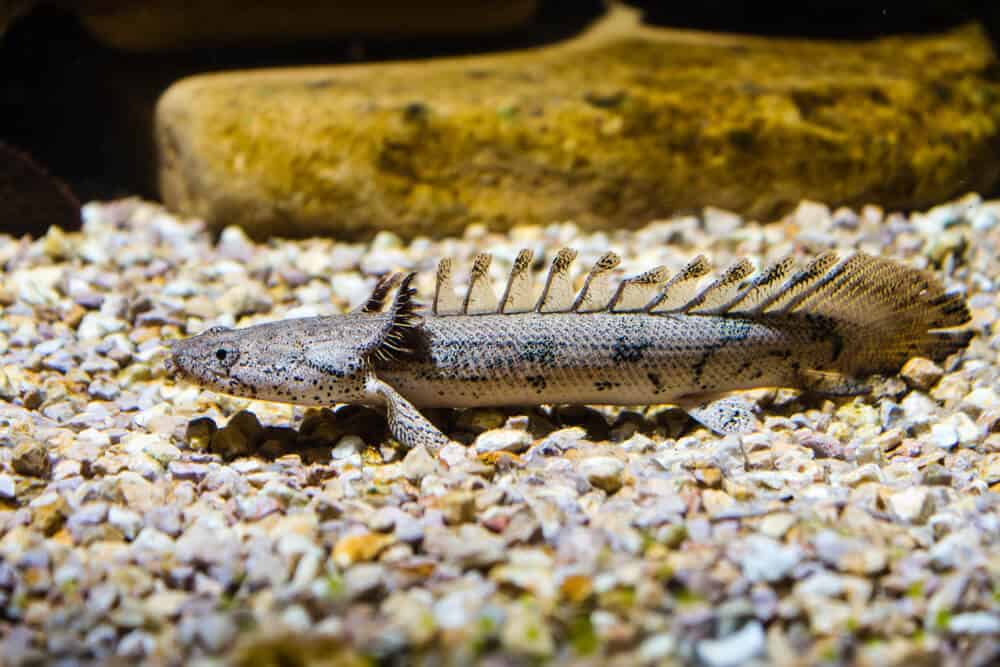
6. Blue Acara
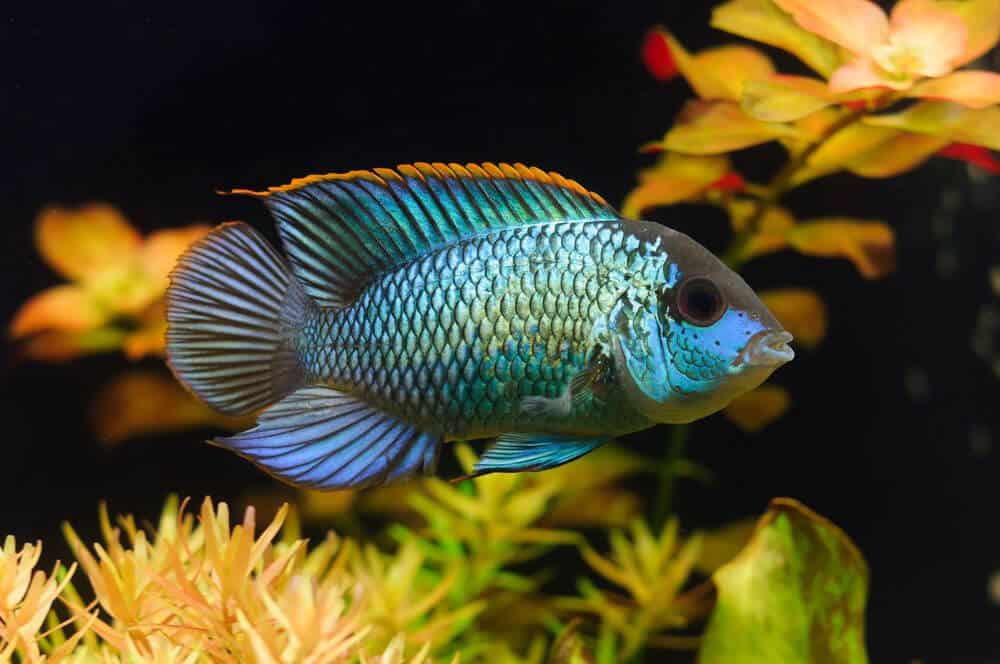
7. Clown Loaches
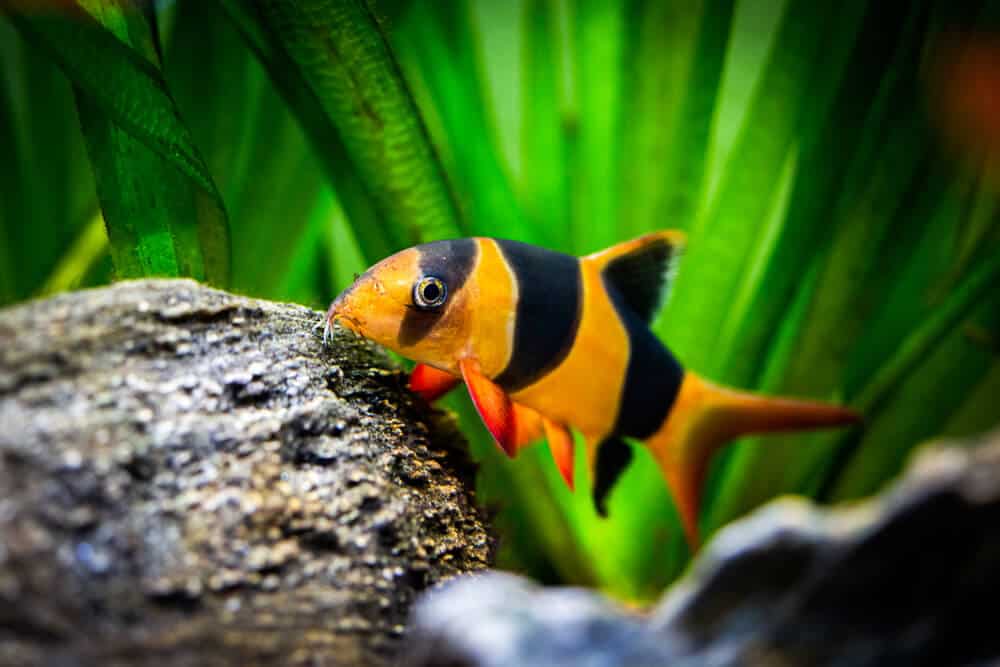
8. Plecostomus

9. Silver Dollars
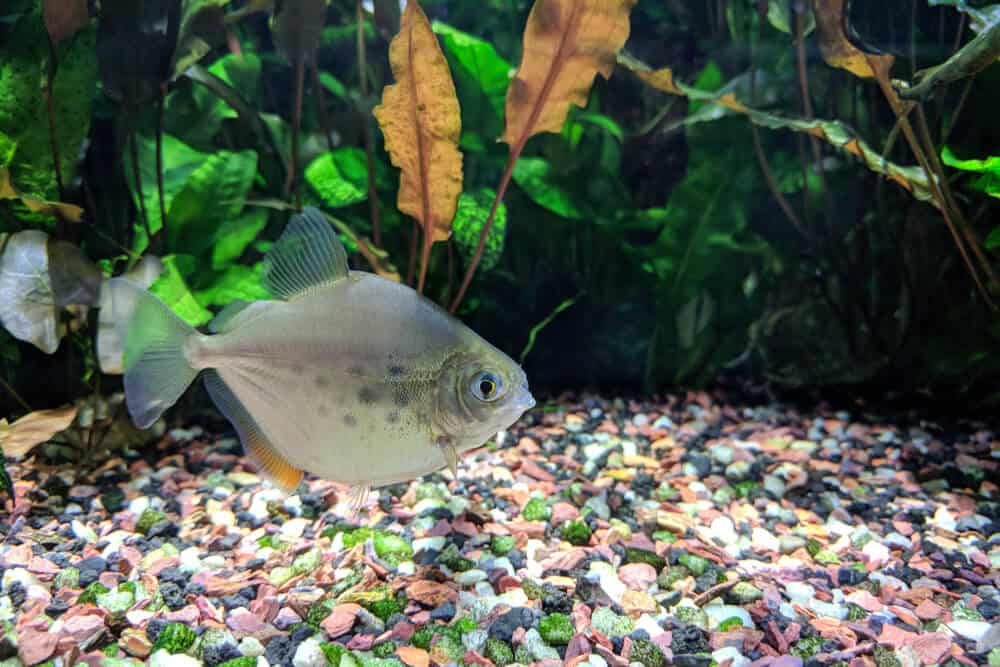
10. Mbuna Cichlids
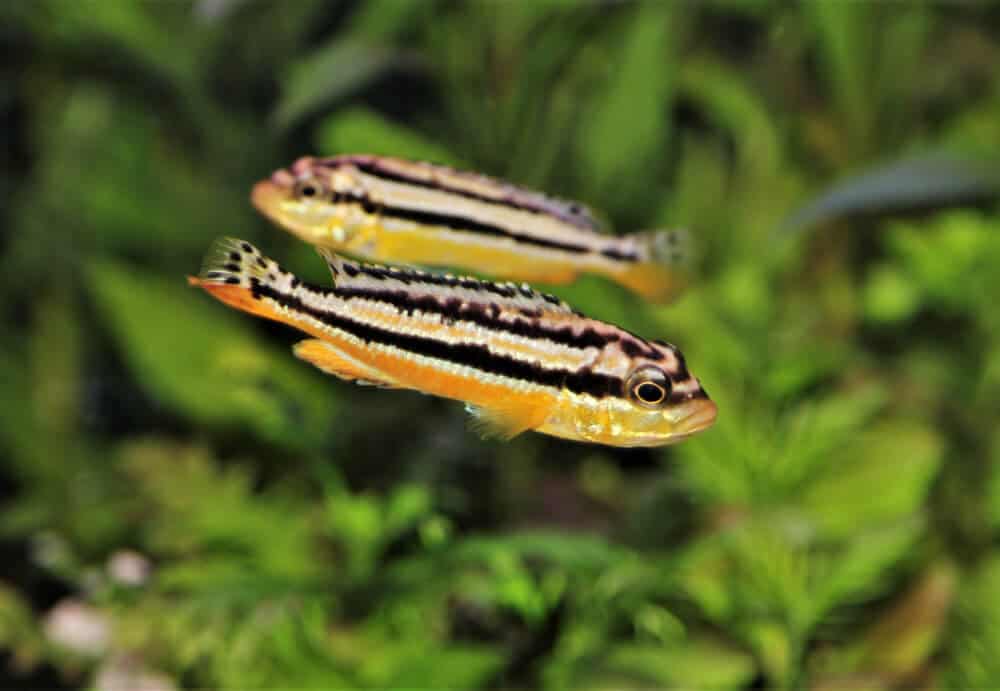
11. Convict Cichlids

12. Firemouth Cichlids

If a Jack Dempsey cichlid feels like the tank is too crowded, it will begin to attack other fishes. It will start with the small ones, which can be eaten easily. If there are invertebrates included in the tank, such as shrimp or snail, automatically, they will become snacks.
To sum it up, their only suitable tank mates are those that are large enough not to fit their mouth. They should have the same aggression level so that they can defend themselves. To prevent unwanted injuries, make sure the tank is large.
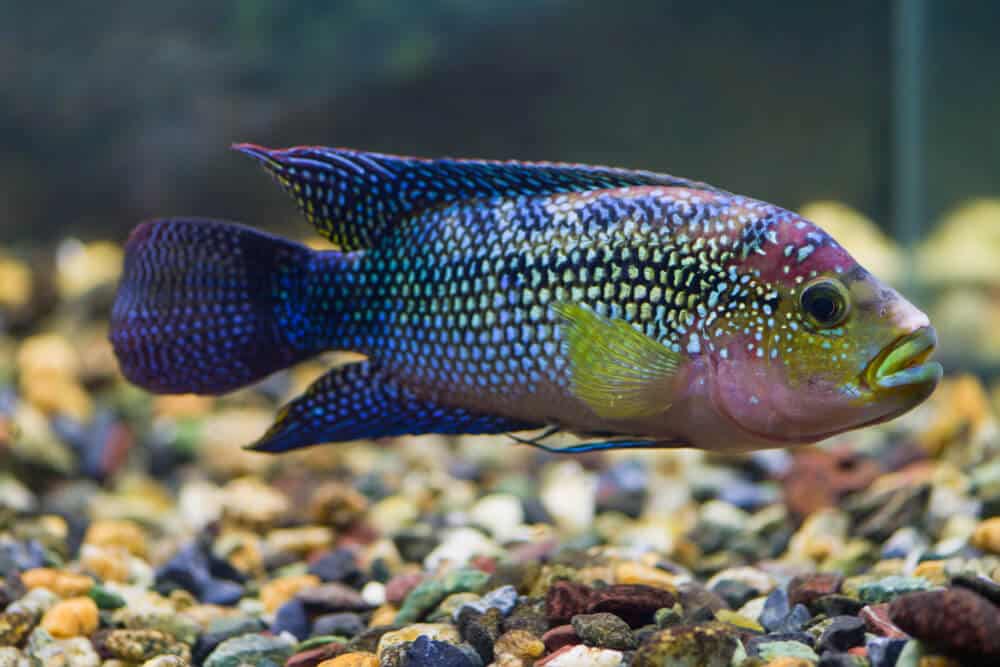
Care Guide: How To Take Care Of Jack Dempsey Cichlids
Healthcare
Being aggressive can take a toll on your Jack Dempsey cichlids. They can acquire injuries that might get open for infections. One great solution to avoid all of that is to provide an excellent habitat for your fish.
As much as possible, have an isolated fish tank for that type of fish. You can add 2 in the tank, making them as a couple so they can breed, but the tank has to be twice as large.
You may think that Jack Dempsey cichlid care is easy. It is only if you have created the ideal setting that limits triggering its aggression. However, diseases can happen also, and one of the most common is ‘Ich’ or ‘white spot disease.’
This is a state where an ectoparasite appears on the fins and body.
The said organism appears like white noodles. To cure this disease, you can raise the temperature of the water up to 86° Fahrenheit.
Another disease that is common among them is the so-called ‘Head and Lateral Line Erosion’ or ‘HLLE.’ In this state, cavities or pits are forming on your fish’s head. This is usually caused by poor nutrition, and so the only solution is to change your fish’s diet.
Aside from environmental factors, poor nutrition can contribute to acquiring diseases. Fortunately, it is easy to spot concerning changes since the Jack Dempsey cichlids are large aquarium fishes.
Additionally, when treating a fish with a disease, it is highly advisable to isolate it to a temporary tank, clean the aquarium, and return the fish once healed.
Diet And Feeding
Another important part of Jack Dempsey cichlid care is feeding. As they’re carnivorous, they don’t actually rely on pellets for nutrition. They will crave any kind of meat but are not a picky eaters though.
If you add small fishes, as long as they fit inside the mouth of a Jack Dempsey cichlid, automatically, they will be food. Crustaceans such as shrimps can be easily devoured by the fish. As commonly depicted in outdoor fishing, worms can be suitable food.
Although pellets are not sufficient, they can still eat them. Processed dried foods such as canned goods or frozen meat can be very applicable as feeds. Insects such as crickets, grasshoppers, and even flies are also within their tastes.
The most popular food options are brine shrimps and bloodworms. There is no specific food for this type of fish, and you can even mix its preferred food however you want it.
Since they are carnivores, it is safe to incorporate plants within the aquarium.
The amount of food to be fed is just enough for a Jack Dempsey cichlid to consume in under 2 minutes. Adult fishes must be fed once or twice a day, while the juveniles must be fed 2 to 3 times a day to aid their growth.
Breeding
You can encourage the breeding of Jack Dempsey cichlids if there are two of them inside the tank, obviously from opposing genders.
You can tell if a pair is ready to mate when their colorations darken. However, if the male is ready and the female is not, the female can die from continuous harassment from the male.
True to their territorial nature, the parents are attentive and protective of their young. They even break the food into smaller pieces so that the young can feed on it. Unfortunately, like most animals in the wild, they can eat their younglings under stressful conditions. The best way to prevent that is to separate the adults early on.
How Many Eggs Do Jack Dempseys Have?
After a successful mating session, a pair of Jack Dempsey cichlids can produce around 500 eggs.
Conclusion
Jack Dempsey cichlid care is solely based on the fish’s aggressive nature. However, it needs the right environment and fish mates in order to thrive. Overall, as long as its aggression is in check, there is less maintenance required.
